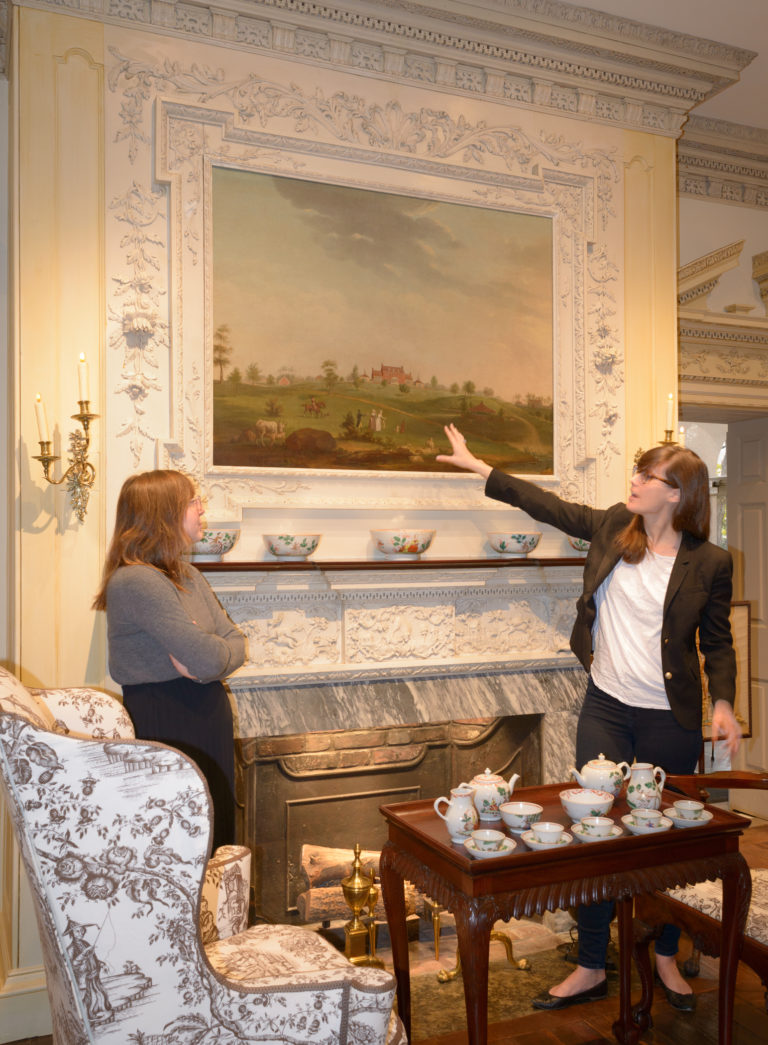
Students and staff at Winterthur continually revisit the collection to ask new questions and imagine the stories these objects can tell. During the 2017-2018 academic year, graduate students had the opportunity to consider the relationship of slavery and racism to objects in the Winterthur collection. Exploring themes of commerce, consumption, and control, the exhibition presented here invites you to ponder the multiple meaning of objects and the powerful impact of slavery.
Truths of the Trade explores the dual themes of the Atlantic trade, fueled by slavery, that shaped early American material culture, as well as the modern trade of curating and the ways we can tell new stories with old objects.
Left: University of Delaware Art History students Anne Cross and Emelie Gevalt discuss an overmantel painting depicting Perry Hall, which is now displayed in Winterthur’s Blackwell Parlor. See Emelie’s video on this piece and its connection to slavery here.
An Invitation to Question
Early American objects can be connected to slavery in countless ways. Truths of the Trade explores just three of these themes: Consumption, Commerce, and Control, that can be used widely to connect virtually all of these types of collections to the history of enslavement.
Online only, a fourth theme examines the more active ways enslaved and free African Americans shaped early American material culture as Creators.
Look for the buttons below throughout the site to follow how curators use each interpretive lens to look Winterthur’s collection in new ways.
A Note on Language
We use the term enslaved instead of slave to emphasize the humanity of people rather than their historical status as property. Portions of the language, imagery, and concepts presented in historic documents and objects here contain challenging material.
